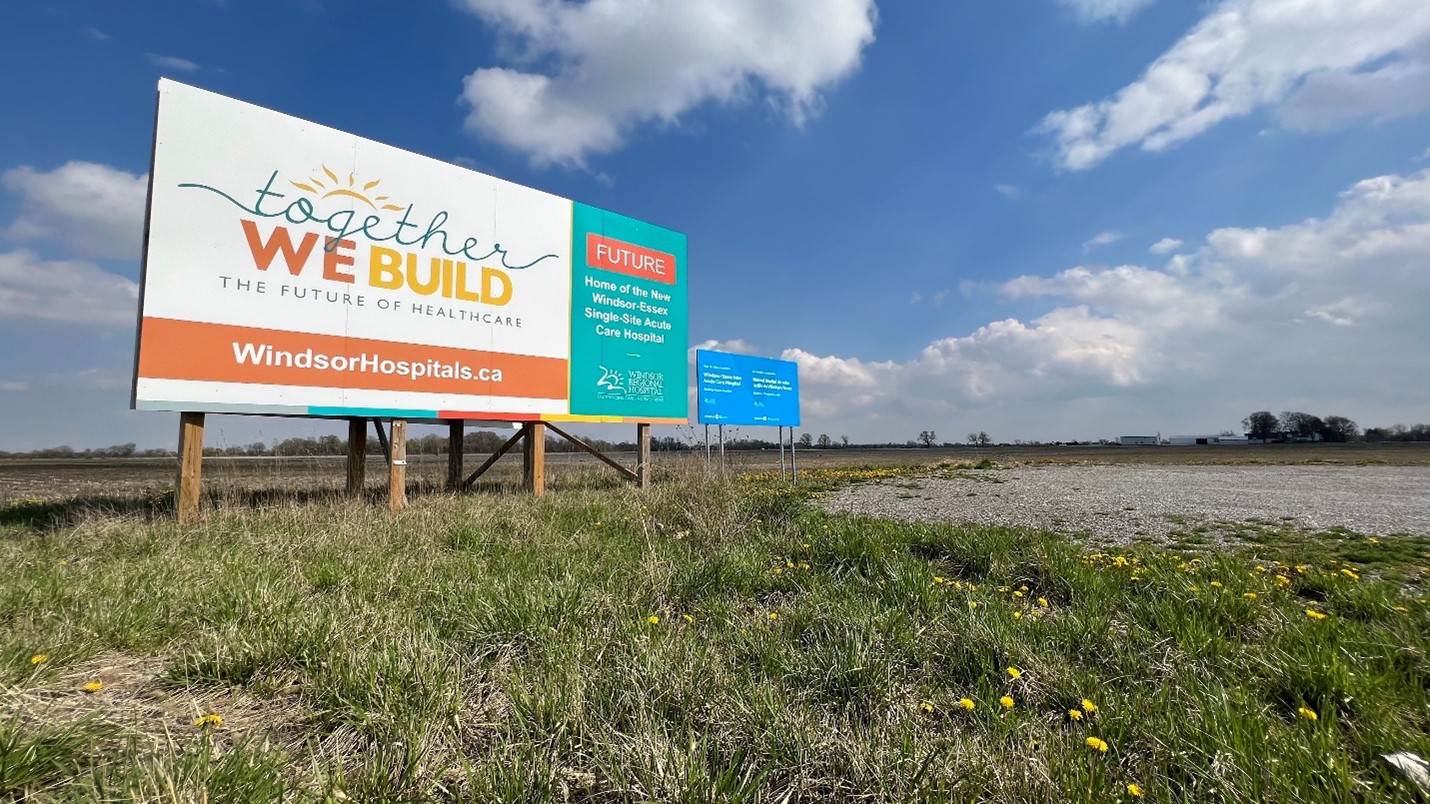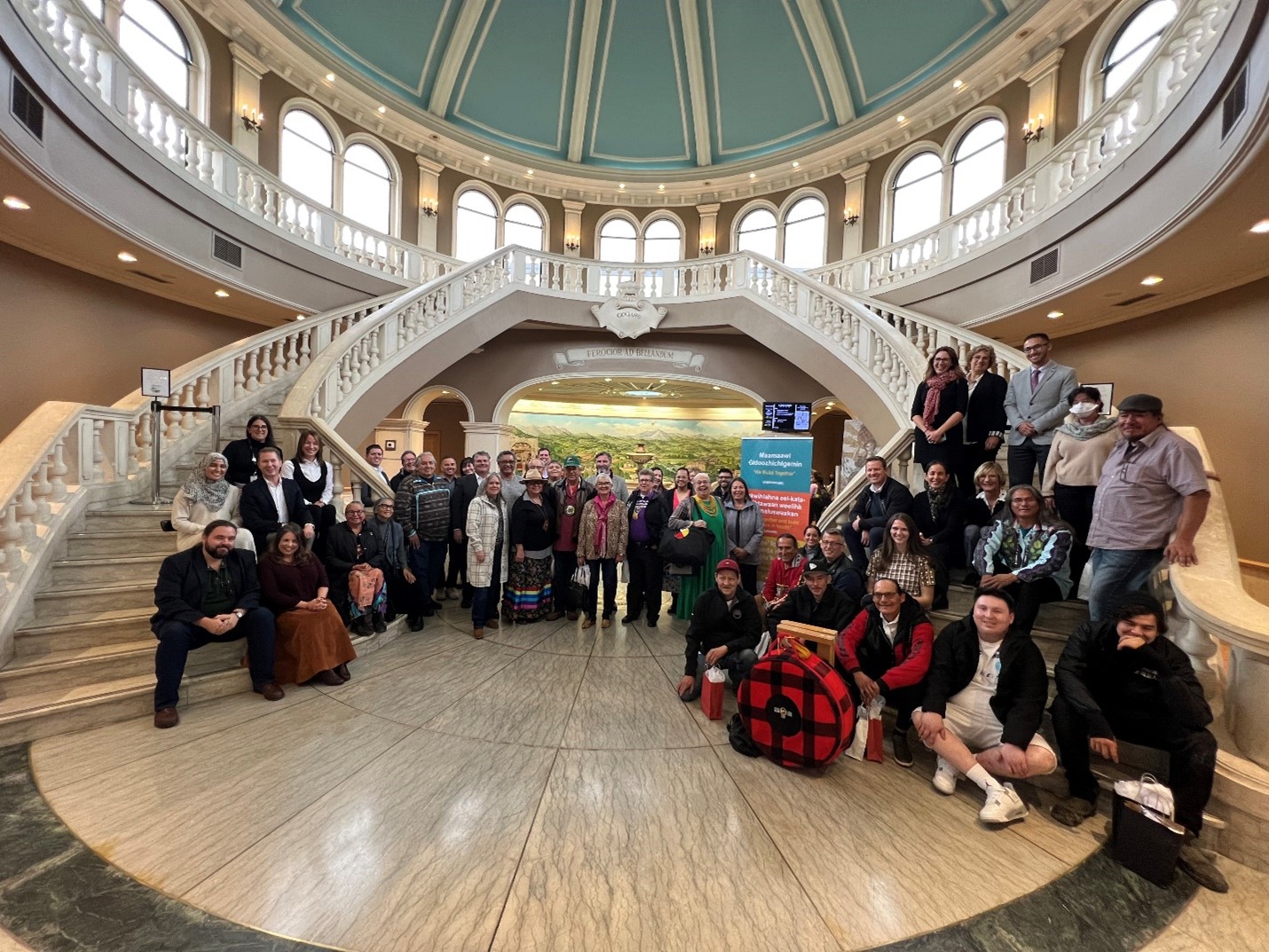Traditional Knowledge Keeper, Liz Akiwenzie conducted the The Maamaawi Gidoozhichigemin or "We Build Together" land ceremony.
Windsor Regional Hospital (WRH) is working closely with Indigenous partners to ensure the region's new state-of-the-art facility is a welcoming and safe place for Indigenous patients, staff and visitors.
As part of a user planning group for the New Windsor/Essex Acute Care Hospital, representatives from eight First Nation communities and two Indigenous organizations have collaborated with hospital staff, leadership and planning experts to develop design plans that include an Indigenous healing space at the front of the building.

According to those plans – submitted to Ontario's Ministry of Health as part of a proposal for the new hospital – the space will accommodate meetings with families and traditional ceremonies, including smudging, and will have access to an outdoor healing garden and storage for traditional medicines and supplies.
“We support what's happening with this hospital because the consultation process was amazing for the First Nations," said Caldwell First Nation Chief Mary Duckworth calling the engagement process that began in the early planning stages precedent setting. “It's important that the proposal came from the user group. It came from the collective eight nations in Southwestern Ontario."
In addition to working together on structural design plans for the future hospital, the Indigenous Services user group members also participated in critical discussions about ways WRH can improve care and cultural safety – not only once the new hospital is built, but now.
According to Infrastructure Ontario's (IO) recent Market Updates, the tendering to select a final design-builder for the new Windsor/Essex Acute Care Hospital will begin in 2025, with construction to follow in 2026.
Hospital CEO: 'We've been listening'
As a result, WRH has already taken meaningful steps toward reducing current barriers and improving the hospital experience for Indigenous people, said CEO David Musyj.
“We've been listening because we recognize the healthcare system has been discriminatory and harmful to Indigenous Peoples," he said. “Together, through this collaboration with First Nations Chiefs and leadership, we have a plan that will help overcome long-standing systemic inequities that have been so harmful to Indigenous people across the country."
In response to a suggestion from the user group — which also includes representatives from the Can-Am Indian Friendship Centre and the Southwest Ontario Aboriginal Health Access Centre (SOAHAC) — the hospital has invited First Nation leaders to join or send representatives to an Indigenous advisory table that will help address current barriers, respond to incidents and improve cultural safety.
Incorporating cultural care practices into healthcare settings is considered a step toward reconciliation in Canada. The Truth and Reconciliation Commission's (TRC's) 2015 report documented colonial policies and interventions against the wellbeing of Indigenous peoples and communities, including Canada's residential school system, the Sixties Scoop and other harmful practices that are directly linked to significant health disparities for Indigenous people and communities, compared to the general population.
In its calls to action, the TRC called on health care centres “to address the physical, mental, emotional and spiritual harms caused by residential schools," and to recognize the value of Indigenous healing practices and include them in collaboration with Indigenous healers and Elders when requested.
Ceremony invites healing and wellness for all

In October, dignitaries and leadership from Caldwell and other regional First Nation communities joined hospital and community leaders to honour the land where the hospital will be built and the connection of the original peoples who resided in the area.
The Maamaawi Gidoozhichigemin or "We Build Together" ceremony included a sacred fire, the remembrance of the ancestors through offerings of strawberries, blueberries and fish and traditional drumming and singing.
Traditional Knowledge Keeper, Liz Akiwenzie conducted the land ceremony that acknowledged the rich history of First Nations in the area, honoured the diverse traditions and culture of the territory, gave voice to the land and its many stories, and invited positive energy into the project space for healing and wellness of all who will be attending the future hospital.
(Pictured above) Following the ceremony participants gathered for lunch and an update on the project.
“It's a way of bridging the awareness, understanding, knowledge and wisdom of the original peoples and settlers working together," Akiwenzie said.
“For the healing and wellness of all."
The New Hospital's Location
The New Windsor/Essex Acute Care Hospital will be located at the corner of County Road 42 and the 9th Concession, which is on the traditional, ancestral, and contemporary lands of the Niswi Ishkodewan Anishinaabeg: The Three Fires Confederacy (Ojibwe, Odawa, and Potawatomi). To learn more about the Three Fires Confederacy and how it developed, please visit Three Fires Confederacy - Bayfield Historical Society.
The Indigenous Services User Group includes representatives from:
- Aamjiwnaang First Nation
- Bkejwanong First Nation
- Caldwell First Nation
- Eelŭnaapéewi Lahkéewiit
- Kettle and Stony Point First Nation
- Chippewas of the Thames First Nation
- Munsee Delaware First Nation
- Oneida Nation of the Thames
- SOAHAC (Southwest Ontario Aboriginal Health Access Centre)
- Can-Am Indian Friendship Centre